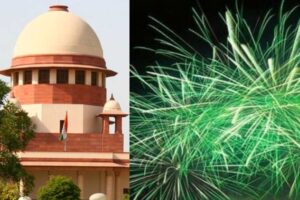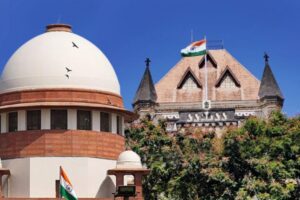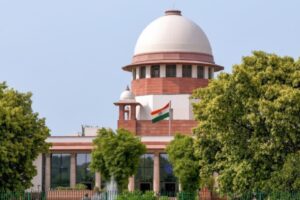
Chief Justice of India, DY Chandrachud, recently called for a national-level recruitment process for judicial services, emphasizing the need to move beyond “narrow walls of regionalism and state-centered selections.”
Speaking at the ‘National Conference of the District Judiciary,’ he stressed the importance of attracting skilled personnel to address the high number of pending cases. He also highlighted the need for a standardized recruitment calendar nationwide to ensure timely filling of vacancies.
“Our current national average disposal rate is 95%. However, pending cases remain a significant challenge. To improve our disposal-to-filing ratio, we must attract skilled personnel,” said Chandrachud. He pointed out that vacancies in judicial personnel are at 28 percent, and non-judicial staff vacancies are at 27 percent. To make progress, courts must operate at full capacity, not just at 71 percent.
The conference discussed criteria for judge selection and the standardization of recruitment calendars. The Chief Justice stressed the importance of national integration in judicial recruitment, moving beyond regional and state-based selections.
Chandrachud also mentioned that the Supreme Court’s Centre for Research and Planning is preparing a white paper to integrate state-level training modules with national and international best practices. He emphasized the need for a systematic nationwide curriculum for judicial training, incorporating innovative methods and technology to track progress.
“The new curriculum will bring uniformity in training calendars, integrate judicial training with IT, and establish a feedback and assessment system,” he said.
The Chief Justice underscored that justice delivery is an essential service provided by the courts, especially for the most vulnerable. He praised recent efforts to modernize the judiciary, making it more tech-savvy and accessible, with improvements like trained personnel, spacious court complexes, facilitation centers, e-seva kendras, medical facilities, and crèches.
Chandrachud highlighted the work of the committee on reducing case arrears, led by Justice AS Oka, Vikram Nath, and Dipankar Datta, which has developed an action plan to reduce case backlogs through case management. This plan includes forming district-level case management committees, resolving long-pending cases, and using technology to plan and track strategies.
He also emphasized the importance of alternative dispute resolution methods like Lok Adalat and mediation to reduce the burden on courts. “There is no reason for cases that can be settled between parties to linger in courts for long periods,” he said.
Chandrachud also addressed the importance of judges’ well-being, recognizing the unique stressors of judicial work and the need for robust support systems and mental health initiatives. “Judicial wellness is not just a personal concern but a democratic imperative for upholding the rule of law,” he stated.
Lastly, he highlighted the need to bridge the gap between the district judiciary and High Courts, advocating for open communication, fair transfer policies, equitable distribution of work, and transparency in promotions and assessments. He called for a data-driven evaluation of judicial officers, rather than relying on inspections alone, to foster a sense of ownership and belonging among district judiciary members.
Chandrachud concluded by emphasizing that the district judiciary is the backbone of the institution and that the conference provided an opportunity to revisit the state of the judiciary and explore solutions for both immediate and long-term improvement.




